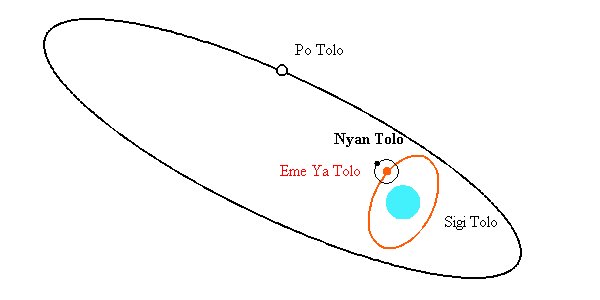Even in the harsh light of van Beek's revelations, Un Systeme Soudanais de Sirius remains an enigmatic document. In the Net age, the Societe des Africanistes sends its Journal by mail order. Getting the real thing was creepy...
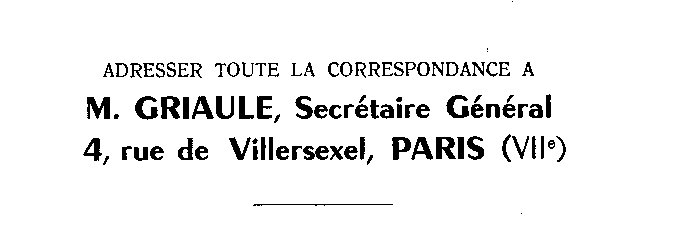
A Sudanese Sirius System
Un Systeme Soudanais de Sirius (1950) was the first
document claiming the Dogon knew about Sirius B and C. Van Beek
claims this was half Griaule, half Dogon produced, from being
mangled in the translation.
Amadingue-van Beek
hypothesis
Based on known facts itself, accounts for both the Real Dogon
Facts and the Griaule data, while still not being a deliberate
fraud on Griaule's part. This quadruple combination is
irresistible for Occam's razor -- and thus has a 99.99%
probability of being right:
From "Dogon Restudied" by van Beek:
"According to Amadingue… Ambara never spoke in terms of
a double-star system. What he did speak about always… were
stars of different generations (togu; the French translation is
his), meaning (and pointing out) two adjacent stars in the sky,
which were to be considered as father and son to Sirius as a
"grandfather." These stars, as Amadingue pointed them
out to me [van Beek], were the two other stars of the Dog
constellation. If this is so, then Griaule must have interpreted
the information given by Ambara and Yebene in a different fashion,
as a system of double and triple stars."
The intriguing question is then how the misunderstanding was
sustained with the creation of detail, the creation of then-unknown
detail, the creation of still-unknown detail (see testable statements), participation of
the four informants, explicitly the chief Ongnonlou, as well as
Bambara and even Bozo informants, and the production of drawings,
let alone the participation of other members of the expedition,
including, obviously, Germaine Dieterlen, whose role as co-author
was crucial, and who maintains the truth of the Sirius findings
to this day. Marcel Griaule's charisma is made to account for a
lot -- or perhaps it was considered by all to be just one more
story in the milieu of already-separated-from-reality Griaule
school-Dogon bricolage myth.
van Beek's footnote.
"In Yugu Dorugu a trace of Griaule's star-hunting still
lingers. Informants say that in olden times people knew about a
star that appeared during the year of the sigu, but further
inquiry leads again to Griaule."
Even in the harsh light of van Beek's revelations, Un Systeme
Soudanais de Sirius remains an enigmatic document. In the
Net age, the Societe
des Africanistes sends its Journal by mail order. Getting the
real thing was creepy...

Principal informants for Un System Soudanais de Sirius
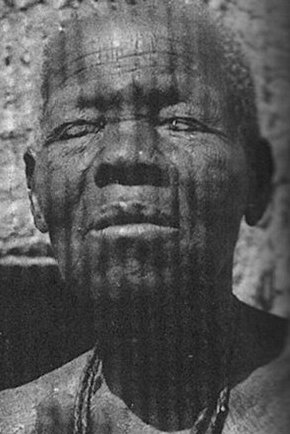 |
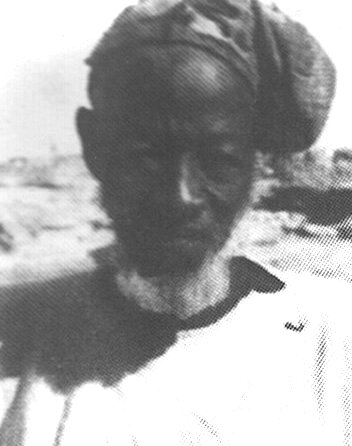 |
 |
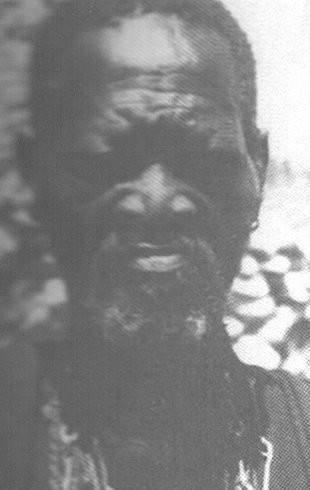 |
| Innekouzou Dolo, 65-70, priestess of Amma, diviner |
Ongnonlou Dolo, 60-65, patriarch of the village of Go |
Yebene, 50, priest of the Yebene Binu of Upper Ogol |
Manda, 45, priest of the Manda Binu, living in Orosongo |
The paper starts with a discussion of the 60 year Sigui (or sigu)
ceremony and various ways of counting it.
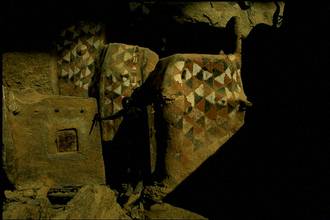 |
This marking is claimed in Un Systeme Soudanais
de Sirius (fig 2, p278) to be a calendar counting
the years to a Sigui. Is it really?
Meanwhile, this section comprises the famous passage in
which Griaule finds old Sigui masks in a cave and dates
the event back to "first half of the 13th century."
This may be true according to this statement of a van
Beek informant: "Like a binugejinu [shaman]
he [Griaule] went through the mountains straight to the
place where it [the cave] was hidden." |
There is a supreme irony in the fact that Griaule and Dieterlen
want to know how their informants knew about these stars without
a telescope, and also want to know why the Sigu was 60 years,
when Sirius B orbit was 50. The first question is the very Sirius
Enigma pursued by many today. But the second question is still
valid: How should the two events, sigu and the orbit of "po
tolo", be connected, when their occurence is every 60 years
and 50 years respectively? The orbit is reported as being counted
double (100 years) in base 80 (80 + 20). Sigu is 60 years (80 -
20). The two events would coincide only once every 300 years.
Alternatively, (hold your breath) they could not be connected at
all.
Then we are introduced to the enigmatic Po Tolo, "Star of
Fonio" and known here as "Digitaria." This is
stated to be the "origin of all
things."
The paper enumerates a
number of astronomical statements as follows (links to
Astronomical Tests):
"The orbit describing Digitaria around
Sirius is perpendicular to the horizon" -- p280
"When Digitaria is close to Sirius, it
becomes most brilliant; when it is furthest away, Digitaria gives
a scintillation which
the observer believes as many stars." -- p281
"The period of the orbit is counted
double, that is 100 years." -- p282
"Besides its movement of translation,
Digitaria turns on itself in a year." -- p283
"The Star [Digitaria], which is white, where Sirius is seen as red, is the origin of all things." --
p284
"The contents of the recipient star are
ejected by centrifugal force, in the form of infinitely small parts comparable to
grains of Digitaria developing quickly: 'The things exiting to
outside the star become as big as it every day.'" -- p286-7
"Digitaria is the smallest of all things,
and the heaviest star"
-- p287
"It [Digitaria] is composed of a metal named sagala, a
little brighter than iron, and of a weight that everyone on earth
cannot lift it. The star weighs 480 mule loads (about 35,000 kg),
or all grains, or all the iron on earth, if they were
theoretically the size of a stretched cow hide or a mortar board."
-- p287
"But Digitaria is not the sole companion
of Sirius: the star emme ya, 'Sorghum Female,' more voluminous than it, but four times
lighter than it, follows a vaster trajectory in the same
direction and the same time as it (50 years). Their respective positions are where
their rays make right angles." -- p287
"It [emme ya] also emits rays which have the
quality of solar rays."
-- p288
"it [emme ya] is accompanied by a satellite which is named "star of Women,"
nyan tolo" -- p288
These statements are supported by the following diagram, among others:
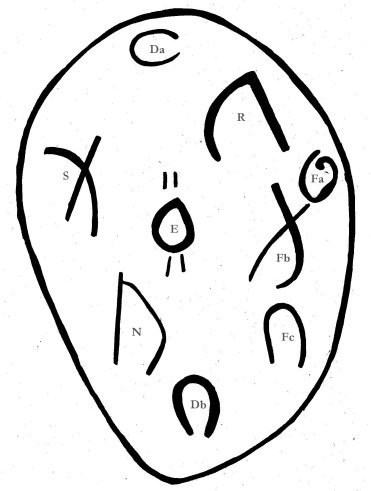 |
Nyan aduno tonu (Drawing
of the World of Women) or Anduno dale donule tolo (Drawing of the Heights and Depths of the World) -- p290 This is the drawing that kicked off 50 years of controversy. This most compelling feature of Un Systeme Soudanais de Sirius claims to give a overview of the whole Sirius system, an executive summary of the foregoing statements. True size is about twice this. S: Sirius A (sigi tolo -- "Star of Yasigi") Da-b: Sirius B, the "egg of the world," at extreme orbital positions (po tolo -- "Star of Fonio") E: Sirius C (emme ya tolo -- "Star of Sorghum Female") showing "rays" surrounding it. "Put at the centre of the egg as the Sun at the centre of the solar system." Fa: Sirius C's planet (nyan tolo -- "Star of Women"). The small spiral shows it is a satellite of "Sorghum Female." Fb: "Sign of women" Fc: "Sex of women" R, N: Mythical personages: R: Yurugu, the Fox N: Nommo, the Fish |
This is one of the "raw documents" which Griaule and
Dieterlen were so eager to share. The style of presentaion of Un
Systeme Soudanais de Sirius is in fact better described by
Claude Meillassoux.
"Far from taking the form of verbatim transcriptions in
the native language, they combine translations of brief
quotations with paraphrases, interpretations and commentaries…
it is practically impossible to distinguish between what
originates from the informants and what comes from the
anthropologist."
Presumably Ambara is present in Un Systeme Soudanais de
Sirius, invisibly, as the interpreter, and thus the constant
factor to maintain the Amadingue-van Beek hypothesis in all these
interactions is Ambara-Griaule as interpreteur-enqueteur.
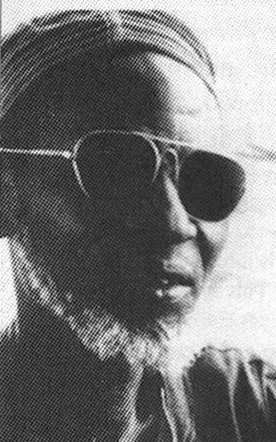 |
Ambara later became an informant in his own right for Griaule and Dieterlen, was reported to have good story-telling abilities, and to be relatively well-educated. Paulme commented that his reproduction of customs lacked confirmation, while in later life he restricted access of other interpreters such as Amadingue to the material. (van Beek) |
Even though, in this hypothesis, Ambara was maintaining (vainly)
that the Sirius situation was about b-CMa
and g-CMa and not Sirius B and Sirius
C! (Meillassoux says: "Even in the best of cases, could they
propose corrections without seeming discourteous or incurring the
loss of their interlocutors' generous friendship?") Can
generation (togu) be associated with giration (orbits)? There is
also the fact of Griaule's references in Un Systeme Soudanais
de Sirius to the French astronomer Baize in the 1930s. Baize
is quoted as involved in early speculations about Sirius C in
this astronomical test.
There seems no doubt that Griaule was aware of the then-known
details, and even the most advanced conjectures, of the Sirius
system. With this, we have to assume that all of the remaining
detail, with "the cat out of the bag," was elicited by
the enthusiastic Griaule.
All the same, if this had proceeded from a misunderstanding of
"two stars near Sirius," and Griaule had inadvertently
given them the ground plan, the house the Dogon built for him is
still surprising in its coherence. Van Beek comments
interestingly on one aspect of the process of "culture
creating culture":
"Yet, despite all the odds and ends picked up from the tręsor of Dogon culture, from neighbouring civilizations, and from Christianity and Islam, much of the myths consisted of new, innovative creations by remarkable people combining great intelligence with a creative imagination. They managed to create fascinating and coherent mythical accounts, thus conveying their own world view, stressing those aspects that interested the researcher, and casting off the shackles of social reality. Besides new story elements their principal and quite astonishing achievement is the construction of a system--a close integration of elements hitherto unrelated." The Dogon imagination gives pause for thought, as will be seen. Whether they were recording ancient history or mking it up on the spot, they still come out of it as pretty smart.
Can we assume that, in van Beek's words, "most of the people concerned…[researchers and informants] believed in it more or less implicitly"? Hence the surprised reaction of both Griaule and Dieterlen. Also, in this case, the revelations, not being a deliberate forgery, still have value, as (van Beek puts it) "documents humaines," expressions of creative energy.
